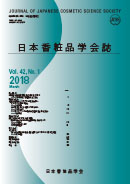Volume 42, Issue 1
Displaying 1-7 of 7 articles from this issue
- |<
- <
- 1
- >
- >|
Regular Article
-
2018 Volume 42 Issue 1 Pages 1-8
Published: March 31, 2018
Released on J-STAGE: March 31, 2019
Download PDF (1105K)
Seminars
-
2018 Volume 42 Issue 1 Pages 9-14
Published: March 31, 2018
Released on J-STAGE: March 31, 2019
Download PDF (674K) -
2018 Volume 42 Issue 1 Pages 15-20
Published: March 31, 2018
Released on J-STAGE: March 31, 2019
Download PDF (972K) -
2018 Volume 42 Issue 1 Pages 21-25
Published: March 31, 2018
Released on J-STAGE: March 31, 2019
Download PDF (824K)
Basic Lecture
-
 2018 Volume 42 Issue 1 Pages 26
2018 Volume 42 Issue 1 Pages 26
Published: March 31, 2018
Released on J-STAGE: March 31, 2019
-
 2018 Volume 42 Issue 1 Pages 27-35
2018 Volume 42 Issue 1 Pages 27-35
Published: March 31, 2018
Released on J-STAGE: March 31, 2019
Topic
-
2018 Volume 42 Issue 1 Pages 36-39
Published: March 31, 2018
Released on J-STAGE: March 31, 2019
Download PDF (934K)
- |<
- <
- 1
- >
- >|
